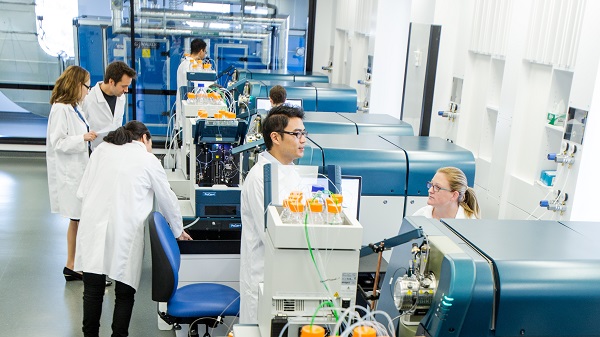In the mid-1980s, a young boy attended the Children’s Hospital at Westmead in Sydney with a rare cancer in one of his adrenal glands. When his oncologist, Dr Luciano Dalla-Pozza, discovered that the boy’s mother had breast cancer at a young age, he decided to investigate.
Further digging revealed that the family was extensively affected by cancers of many different types.
Although the human genome had not been mapped at the time, a PhD student at the Children’s Medical Research Institute (CMRI) at Westmead managed to identify the rogue gene that had mutated in the boy’s family.
Fortunately, inheriting a mutation of this TP53 gene is rare, but the gene is of great interest to researchers, because it happens to mutate during the development of most cancers.
“Mutation in the TP53 gene is a very common occurrence when cancers are forming,” says CMRI director, Professor Roger Reddel. “Studying rare inherited conditions can give you tremendous insights into common diseases.”
The study of rare diseases can inform precision medicine – a big data approach to personalising treatment based on the variability of a person’s genes, environment, and lifestyle.
Precision medicine is not a new concept, but modern genomics has made a much wider range of treatment options available based on an individual’s specific genetic makeup. And key insights about our genetic makeup are coming from all corners of medical research.
Rare diseases – a common problem
Of course, research into rare diseases is important for its own sake. A rare disease is defined as one that affects less than one in 2,000 people. But there are an estimated 7,000 known rare diseases, and more than 90% lack an established treatment.
“We’re talking about conditions that are individually rare, but collectively not at all rare,” says Professor Edwin Kirk, a clinical geneticist at the University of New South Wales (UNSW). “Collectively, they are a major cause of infant death and childhood disability, and account for a surprisingly large number of hospital stays.”
Kirk is investigating rare conditions such as congenital heart disease and epileptic encephalopathy. He says that being able to get a clear diagnosis, at the very least, is important to families, and can help assuage the guilt some parents feel when they’re in the dark about their child’s condition.
A diagnosis can also help parents make decisions about having future children, and enable them to connect with other families who understand what they’re going through. Global communities of families with rare diseases are now cropping up on social media to share information and support.
One particular rare disease where progress is being made right now is spinal muscular atrophy (SMA).
In its most severe form, an affected child develops normally, but then starts to regress as motor neurons progressively die. The effects are devastating. A baby’s muscles weaken so they can no longer crawl or hold their head up. Eventually, they will not be able to breathe on their own.
The NSW Government recently piloted a screening service and detected SMA in a Sydney newborn before symptoms appeared. Because the nerve cells were still intact, it was possible to treat the newborn using gene therapy.
It’s too soon to know how successful the treatment has been, but some patients in the US have lived to three years of age – well beyond the expected lifespan.
The new therapy involves transferring a normal copy of the gene into cells that are affected by a mutation to restore healthy function. Two teams at the CMRI have been working on using the adeno associated virus (AAV) as a gene delivery mechanism.
This allows them to make significant contributions to gene therapy research, which has now become a global collaborative effort.

The knowledge transfer
This technique of attempting ‘gene correction’ using gene therapy needs to be individually tailored to each rare disease, but the technology used in the process has many common features.
This means that, once the results of the research become freely available to other researchers – often via international databases – it can inform our understanding and potential treatments of other conditions.
“The more experience we have with the gene delivery and how it works for that particular condition, the easier it is to transfer it to other inherited conditions,” says Reddel.
Another example of knowledge transfer from rare disease research to precision medicine is through Reddel’s research on short telomere syndrome (STS).
Telomeres are caps on the ends of our chromosomes that prevent them from fraying, but as we age, they shorten, effectively giving our cells a ‘use by’ date.
In STS patients, their telomeres shorten rapidly, leading to problems with the growth of tissues, even in the womb. But while this can be a devastating disease, it’s providing surprising insights into fighting cancer, as normal telomere shortening helps to prevent cancer from developing in the first place.
“An almost universal feature of cancers is that they manage to overcome the normal telomere shortening process,” explains Reddel.
His CMRI colleague, Associate Professor Tracy Bryan, has led a team that discovered a new gene involved in STS. The mutated version of the gene prevents the successful binding of telomerase – an enzyme that stops the telomeres from shortening too rapidly.
Around 85% of cancers use an excess of telomerase to stop the shortening of telomeres and therefore the ageing of the cancer cells, allowing them to multiply without limit. This means that understanding the gene and its mutation could yield fresh insights for fighting cancer.
Seeking the less beaten paths
In their quest to cure rare diseases such as SMA and STS, researchers are often faced with major challenges, such as a lack of funding or arduous ethics approval processes.
Another problem is small sample sizes.
Typically, the process for testing a potential treatment would involve a randomised, controlled trial with 50 to 100 participants, with half receiving the treatment and half a placebo. But rare diseases affect less than 0.05% of the population, and even two people with the same disease might have different versions of it.
This means researchers must get creative in developing rigorous methods to test a treatment’s efficacy and safety – and these new methods could be useful in studying adult cancers.
As cancer cells become genetically unstable, they keep growing randomly, so each person’s cancer is effectively unique. Right now, cancers are broadly treated without understanding their exact genetic composition, and these treatments typically involve unpleasant and harmful side effects.
As methods to understand and treat rare diseases are developed, treatments for common diseases may be able to target the individual’s disease more effectively and without these side effects.
As British physician William Harvey noted way back in 1657, nature reveals her greatest mysteries through deviations from the norm.
By Natalie Parletta
Updated 5 years ago
